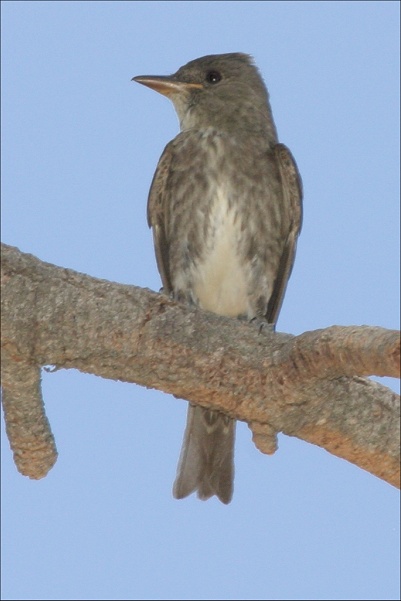
Location: Mt. Laguna, CA
Date: 2004-07-31
Lens: Canon 400mm F5.6

 Olive-Sided Flycatcher
Contopus cooperi
Olive-Sided Flycatcher
Contopus cooperi
 Description
DescriptionThe Olive-sided Flycatcher feeds almost exclusively on winged insects, such as bees, wasps, flying, flies, moths, grasshoppers and dragonflies. This bird is often found high in the tree tops on an exposed perch, where it waits and watches for prey to fly by. This bird has seen a population decrease over the last few decades, which may be a result of habitat loss in its wintering grounds in South America.
Dark olive upperparts and sides. White throat, center of breast, belly, rump, wing bars, and undertail coverts. Appears to be wearing an open "vest" when viewed from the front. Flanks appear to be streaked. The head is triangular shaped and there is an indistinct eye ring. Fairly large dark bill. Notched tail. Sexes similar. Juveniles have browner upperparts. 7.5 inches in length.
Mountain coniferous forests.
 Nesting
Nesting3 buff eggs with brown spots. The incubation period is 14 days. Fledging occurs 21-23 days after hatching. The female incubates the eggs and the male brings her food. The nest is made from twigs and lined with lichens, mosses, and grasses. It is small, bulky, loosely built and typically high up in an evergreen tree.